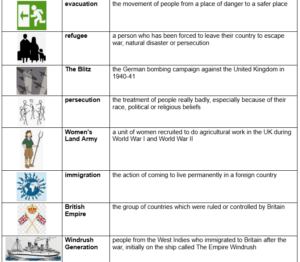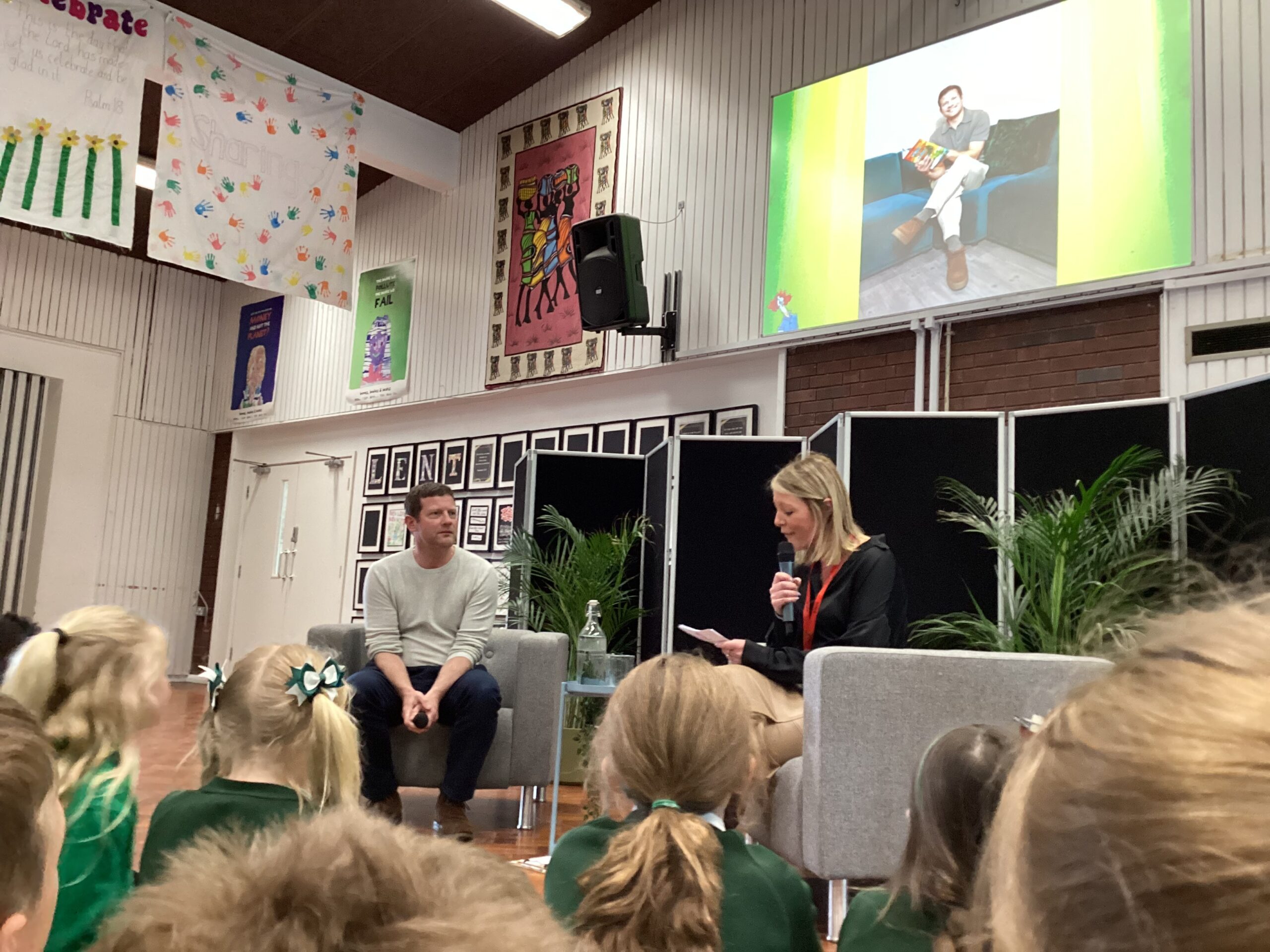Year 5 Historians Explore World War II
This week, Year 5 have been hard at work as young historians, diving into fascinating research about life in Britain during World War II. As part of our research project, the children have been exploring three key areas: life on the Home Front, the Battle of Britain, and the evacuation of children.
Working collaboratively, Year 5 used a variety of carefully selected websites to investigate each topic, gather facts and create to detailed fact files. It’s been great to see their enthusiasm and curiosity as they uncovered how families coped with rationing, how the RAF defended Britain in the skies, and how children just like them were evacuated from cities to the countryside.
Each lesson has involved group discussion, research and teamwork. We’ve also spent time reflecting on the resilience and courage shown by people during the war and how their experiences still teach us important lessons today.



Help at Home: Ask your child about their brilliant research.
Our class novel
We are really getting into the class novel this half term – Letters from the lighthouse. The author is Emma Carroll who we know from earlier in the year when we read Secrets of the Sun King. The book links directly to our learning in topic about World War II. In the book, the main characters Olive and Cliff, are young children experiencing a war situation and are evacuated to the south coast for their safety. We follow their journey and experience the fear, emotion and moments of happiness with them.

Help at home: https://emmacarrollauthor.wordpress.com/
Use this website to learn more about the author with your child.
World War II in Leeds
This week year 5/6 have been learning about the Blitz. They studied a map by Leeds Beckett University which showed where bombs hit during the war.



Help at home: Discuss some of the stories from the website. How does this give us an idea of what war was like in Leeds?
Year 6 maths
In maths this week, year 6 have been using all their knowledge of fractions and applying it to decimals and percentages. They understand that a percentage is out of 100 and that the denominator of a fraction must be 100 in order to convert it into a decimal and percentage. The children recalled their learning of decimals well and could remember their knowledge of tenths and hundredths. They could convert between the two well. The children also applied their knowledge in problem solving and reasoning.

Living and Learning: vaccinations
In Living and Learning this week, Year 5/6 learned about the history of vaccinations. They read about the work of Edward Jenner and how he used cow pox to help find a vaccination for smallpox.
We also discussed how this break through in medical science led the way for modern day vaccinations.
Help at home: read the article about Edward Jenner. Discuss which vaccinations you have had and when you had them.
We are scientists
Our new science topic this half term is all about variation and adaptation. As we are studying living things, we are being biologists. We began by looking at our new vocabulary. It is important we understand these words as it will help us in the lessons. We discussed how there are variations within different groups of living things. We know that we have different breeds of dogs etc within the species. We went on to recognise that when offspring are produced, this can create variations. In humans, this can be things like hair colour and eye colour. We completed some tally charts to see which was the most common eye and hair colour in our class. Blue eyes came out on top and brown hair was the most common.
Here is the vocabulary that we are learning this half term.
Help at home: Can you help your child become familiar with this vocabulary?

Topic: We Are Historians!
This half term, we are becoming historians as we begin an exciting new topic all about Britain during the Second World War. In our first two lessons, we explored what World War Two was, when it happened, and why it began. We looked at the major countries involved, key events that led up to the war, and how it affected people across the world.
We also began to understand some of the terrible impacts the war had, particularly on Jewish people, and learned about the discrimination and persecution they faced during this time. Everyone has shown great curiosity and maturity while discussing these serious topics. We are looking forward to finding out more about life in Britain during the war in the weeks ahead.

Help at home: Ask your child about the new vocabulary they are learning.
Author Event
This afternoon, our school librarians were fortunate enough to attend an author event held at Allerton C of E Primary School. They met author, Dermot O’Leary, who discussed his inspiration and anwered questions.



Science: We are Biologists!
This week, our lively Year 5/6 classes took part in a fun experiment to learn how exercise affects our heart rate.
We started by measuring our resting heart rates before doing four rounds of exercise, including star jumps, running on the spot, and jumping jacks. After each burst of activity, we checked how our heart rates changed and were amazed to see how much faster our hearts beat as we exercised.
The most exciting part was seeing how quickly our heart rates returned to normal once we stopped moving. It was a fantastic way to explore how our bodies respond to exercise and helped us understand the important role our hearts play in keeping us happy and healthy.




Help at home: Ask your child about how the circulatory system is effected by exercise.
Topic: We are computer programmers!
In computing this week, we have been developing a pedometer. Pedometers are devices that track the number of steps you take. They contain an internal mechanism or arm that moves up and down in response to the motion of your hips. With each step, your body tilts to one side and your leg swings forward. As your body shifts the other way, your other leg moves forward as well. Each tilt of your hips, along with the forward swing of your legs, is counted as a step.
In our first lesson, we developed our code – the children needed to fix a few problems with their initial algorithms. We had to use decomposition to help us debug it. In the next lesson, we downloaded our pedometer code to our micro:bits and they worked! Following some success testing them in the classroom, we took them for a spin outside and had lots of fun along the way.


Help at home: Why not have a go at creating a program on Makecode?